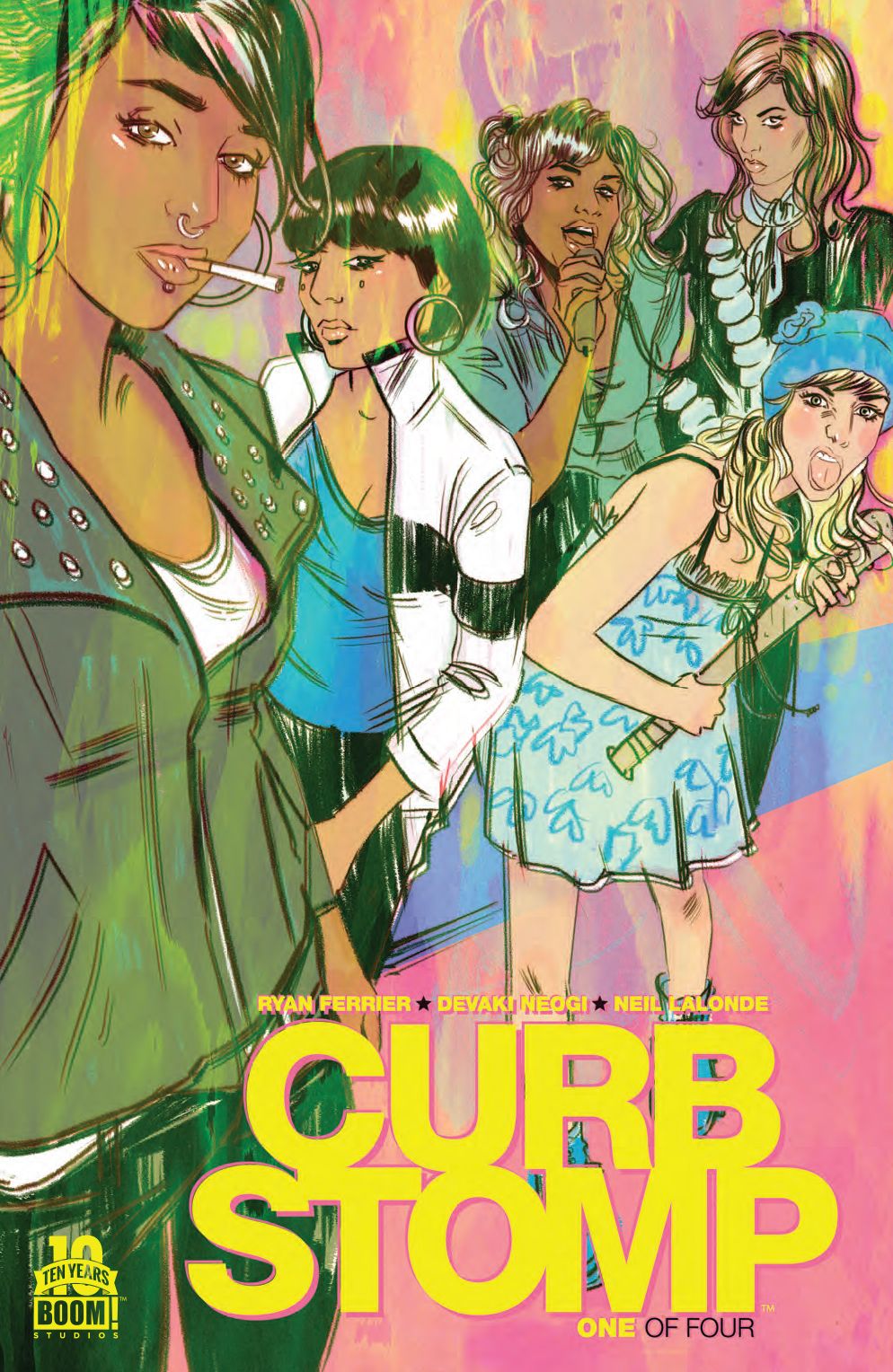"Curb Stomp" #1 by Ryan Ferrier and Devaki Neogi follows the thoughts and actions of Machete Betty, leader of The Fever. Through voiceover textboxes, Ferrier introduces the setting and the rest of the cast. The exposition is well-paced and executed with a short intro sequence for each character before the action really begins. Ferrier is quick to establish Betty's fondness for Old Beach, which comes from a love of home instead of a ruler's attitude towards a kingdom. Ferrier portrays The Fever as caring vigilantes, like Batman instead of unalloyed criminals like the other gangs. They protect and defend while their enemies are motivated by filthy lucre. This is an unrealistic cliche, but it does the job of telling the reader that the women are heroes.
The light tone of "Curb Stomp" is both a strength and a weakness. The names of the characters and the gangs are very catchy and, in many ways, the style and tone of "Curb Stomp" feels more like it's about punk rock music rather than criminal warfare. The scene set in a bar, where Violet steals the stage, is riveting, so much so that it made me wish the comic was about a battle of the bands.
Neogi's linework looks particularly attractive and his detailed backgrounds in this scene add depth without feeling cluttered. The panel compositions combined with Lalonde's disco neon colors light up the night and make each character look great. The art team does a crack job, but much of the comic feels emptier and less interesting compared to the bar scene. Lalonde's colors don't work as well outside, especially in daytime, and -- without the crowd and the stage -- the stiffness of Neogi's facial expressions and figures shows.
"Curb Stomp" gets its title from the major turning point in the action. The moment of Betty's curb stomp is gripping, because the outcome is uncertain. It's also the darkest moment of the comic. Neogi's facial expressions show that Betty's lost control in the heat of battle, making some of the voiceover text redundant.
Despite the threat of violence and stereotypically corrupt politicians, it's difficult to believe that anything really bad will happen based on the cues from both the narrative tone and the art. There's violence in "Curb Stomp," but it doesn't feel visceral because Neogi's style is cartoony, particularly in Violet Volt's over-the-top response to attempted robbery. Action scenes with hand-to-hand combat come across as awkward due to Neogi's stiff figures. It's like Michael Allred's work, but without as much of Allred's retro-pop bounce to it. Lalonde's color is flat and vivid, but his palette skews heavily towards cool neons. Neogi's character design is excellent and gives each member of The Fever a distinct look, but there isn't enough space for serious character development.
The result is bright and fun, but it doesn't cut very deep. With the exception of the curb stomp, the danger level never rises very high, especially with the predictable cliffhanger ending. The story focuses heavily on the theme of family without any kind of commentary on urban violence or crime.
"Curb Stomp" #1 relies too much on the all-female-gang factor to make its premise interesting, but the debut issue is still a fun read, particularly for its punk rock energy.

